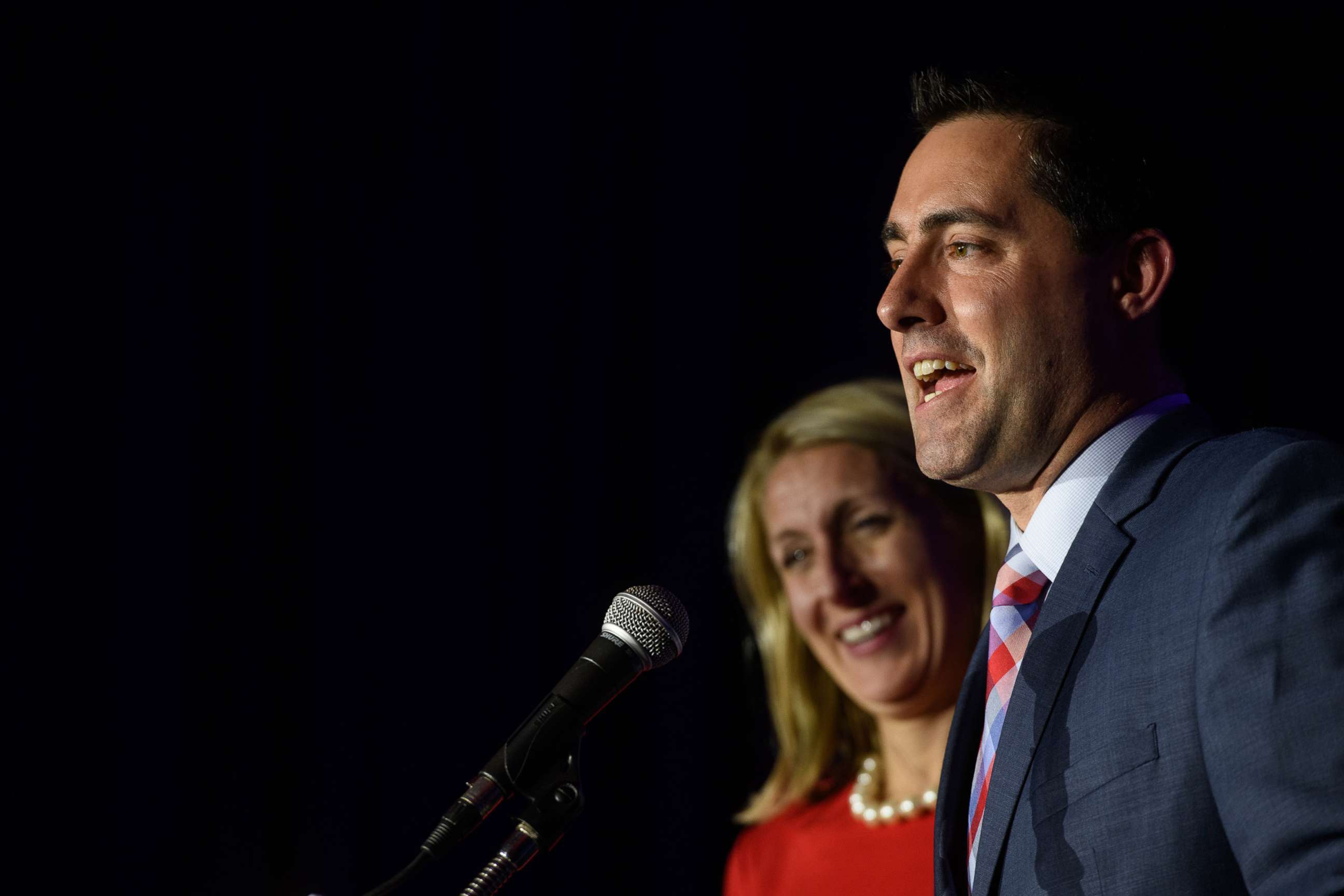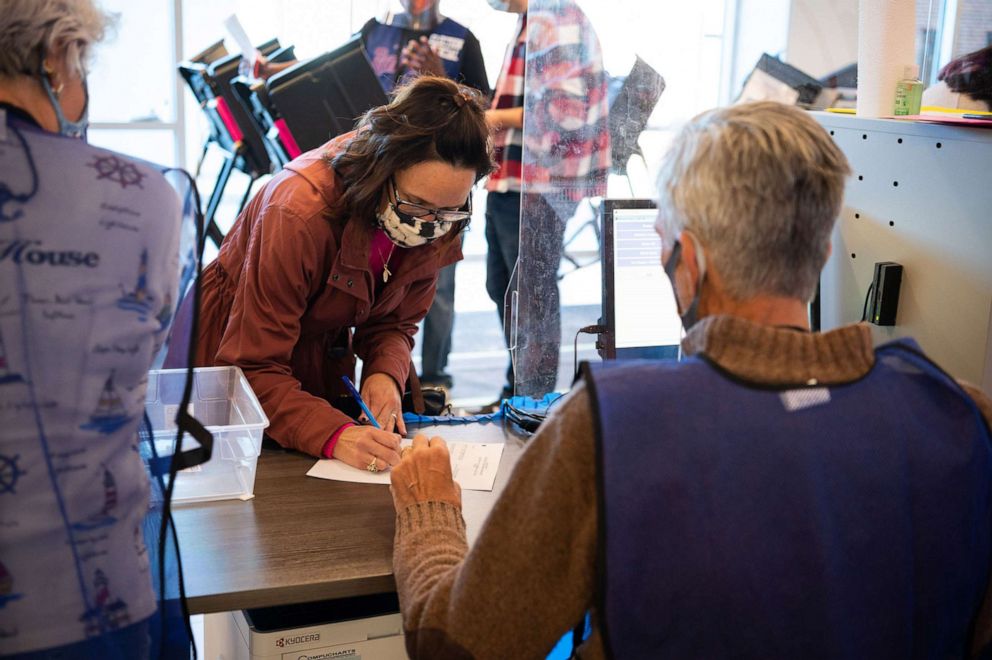Ohio secretary of state stresses 'election night results are never final'
LaRose said this election may be the first time Ohio surpasses 6 million votes.
With just one day until Election Day, the question of when Americans will know the results of the 2020 election is top of mind, as President Trump insists results must be in on Tuesday night.
But Ohio's Republican Secretary of State Frank LaRose stressed that "election night results are never final" on the ABC News "Powerhouse Politics" podcast.
"This idea that election night is sort of this grand reality TV show where everybody gets to go to bed on election night knowing who won and who lost is just a flawed construct that's not the way it works," LaRose said during an interview Monday with podcast co-hosts ABC News Chief White House Correspondent Jonathan Karl and Political Director Rick Klein.
Trump has repeatedly claimed that the winner of the election must be known on election night, saying during a rally in Iowa Sunday, "We should know the result of the election on November 3rd, the evening of November 3rd. That’s the way it's been and that's the way it should be."

While Americans have become accustomed to knowing the winner on election night, LaRose said that this year in particular, due to the influx in absentee ballots, the ability to "make a pretty safe assumption about who's going to win or who's going to lose" may not be possible this year, not just in Ohio, but across the country.
He added, "The real deadline that we're focused on is getting that certification done of the final statewide results by the 28th of November, and then seating our electoral college on the 14th of December ... because that's that's the way the process plays out."
LaRose touted Ohio's system for processing absentee ballots ahead of the big day, noting that usually the 'very first' ballots counted after polls close are the absentee and in person early votes.
"Ohio has a really good system compared to other states. If you look at some of our neighboring states like Pennsylvania, Michigan, even up in Wisconsin, in those states and others they can't even begin processing absentee ballots, they can't cut the envelopes open until Election Day. In Ohio, we've already been doing that for four weeks," he said.
In Michigan, clerks in municipalities with populations of at least 25,000 people were granted some relief for this, allowed to start the processing for a 10-hour period Monday, but overall, the three "Blue Wall" states that President Donald Trump won in 2016 are the most disadvantage among the battleground states this cycle when it comes to processing mail ballots quickly.
LaRose said that county election officials have been able to open returned mail ballots and check voters' registration and signatures, which also gives officials more time to contact voters and give them an opportunity to cure their ballots if there is an issue.
"On election night, the very first ballots counted in Ohio are almost always the absentee and early votes ... so right at 7:30 when the polls close, the boards of elections can begin the tabulation process," he said.
LaRose told podcast co-hosts Karl and Klein that when election results start coming at 8 p.m. or 8:15 p.m., it's largely going to be these votes, and then later in the night, more of the Election Day vote will come in.
The secretary said this year, his office will be highlighting the number of outstanding absentee ballots at the top of their election night reporting website. This key figure could help with calling races, as absentee ballots aren't due until Nov. 13 under Ohio state law, as long as they are postmarked by Monday, but officials will know for certain how many potential ballots could still be returned.
LaRose predicted strong turnout, and said this election could be the first time the state has 6 million voters participate in an election.
"We've seen fully a tripling in the previous numbers for early voting and a doubling in the number of absentee votes so at this point right now... we've seen over 3.1 million absentee ballot applications received over 2.1 million ballots cast and again those numbers are a few days old," the secretary said. "I think that it's entirely possible that by the time the polls open at 6:30 tomorrow morning that more than half the ballots will have been already cast in Ohio."
In 2016, 5.6 million voters, or 71% of registered voters, turned out in Ohio, which LaRose said was "very high turnout."

Indirectly countering the president's oft-repeated talking points, LaRose said that while there were some issues with slow third-party vendors, which he said was "disappointing" and "shouldn't have happened," he's seen "nothing as far as fraudulent activity" with absentee ballots.
"As it relates to any kind of fraud related to absentee voting, that's exceedingly rare. It happens, you know, occasionally and when it does happen we take it seriously," the secretary said, noting that people have been referred for prosecution in the past.
As coronavirus cases are increasing again across the county, and the total daily diagnoses setting new records, LaRose talked about the safety precautions in place and what would happen if a voter shows up to the polls without a mask.
He said his office has "fielded massive quantities of personal protective equipment," including masks, sanitizer, disinfecting wipes and face shields. There will be masks available to give to voters at every polling place.
If a voter shows up to vote Tuesday without a mask, the person will be offered a mask. If he or she refuses to wear the mask, they will be given the option to vote curbside, where a bipartisan team of sworn election officials will bring a ballot for them to fill out, and then after the voter is done, that ballot gets put into an envelope and take it into the polling place to be scanned.
But if the voter refuses to do both of these things, they cannot be denied their right to vote, so the elections officials will do their best to maintain social distancing, and create "ample space" for the maskless voter to cast their vote. The machine will be wiped down following that.
LaRose said what they hope to avoid escalating the situation.
"Folks that are coming to intentionally make a scene by voting without a mask or whatever else, we don't want to give them the attention they're looking for. It's kind of a nothing to see here we're gonna get you voted and get you out the door, in a safe and distance way," he said.
He added, "Really the responsible thing to do is to wear your mask or to take the one that we offer."




